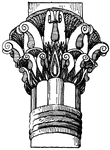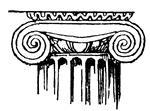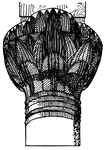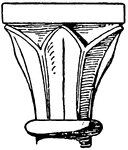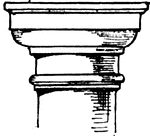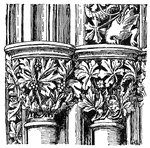The Capitals ClipArt gallery includes 169 illustrations of the top component of a column.
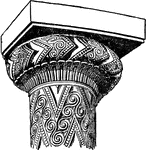
Early Greek Capital
An illustration of an early Greek capital. In several traditions of architecture including Classical…
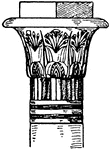
Egyptian Capital
The Egyptian capital is the upper termination of the column with opened papyrus flowers. It is found…
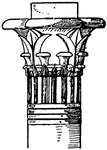
Egyptian Capital
The Egyptian capital is the upper termination of the column with opened papyrus flowers. It is found…
Egyptian Capital
This Egyptian capital is the upper termination of the column with cinctured bundles of papyrus stems.
Egyptian Capital
This Egyptian capital is the upper termination of the column with cinctured bundles of papyrus stems.…

French Gothic Capital
A French Gothic capital from Sainte Chapelle in Paris from the thirteenth century. The capitals were…
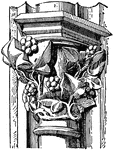
French Gothic Capital
A fourteenth century capital from transept of Notre Dame, Paris. The capitals were tall and slender,…

French Gothic Capital
A fifteenth century capital from the north spire of Chartres. The capitals were tall and slender, concave…

Graeco-Doric Capital
The Graeco-Doric capital is an antique design. It is found on the upper termination of a column.
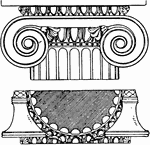
Graeco-Ionic Capital
This Graeco-Ionic capital is a scroll design with intervals of egg band and palmettes.

Graeco-Ionic Capital
The Graeco-ionic capital is a design of a scroll rolled on both sides with spiral curves. It has an…

Grecian Doric Capital
"The Doric Order is, in architecture, the second of the five orders, being that between the Tuscan and…
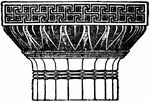
Grecian Doric Capital
"The Doric Order is, in architecture, the second of the five orders, being that between the Tuscan and…

Grecian Doric Capital
"The Doric Order is, in architecture, the second of the five orders, being that between the Tuscan and…
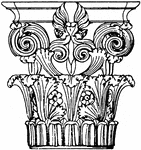
Greek Corinthian Capital
The Greek Corinthian capital is found in a monument in Lysikrates, Athens. It is a design of spiral…
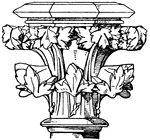
Late Gothic Capital
The late Gothic capital has an abacus that is octagonal with projected leaves. This capital has an appearance…
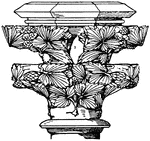
Late Gothic Capital
The late Gothic capital has an abacus that is octagonal with projected leaves. This capital has an appearance…
Lotus Capital
An illustration of a lotus decorated capital. In several traditions of architecture including Classical…
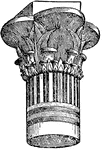
Lotus Capital
An illustration of a lotus decorated capital. In several traditions of architecture including Classical…

Moorish Capital
The Moorish capital is the upper termination design of a column found in the hall of two sisters Alhambra,…

Moorish Capital
The Moorish capital is the upper termination design of a column found in the hall of two sisters Alhambra,…
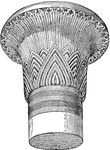
Papyrus Capital
An illustration of a papyrus decorated capital. In several traditions of architecture including Classical…

Persian Capital
An illustration of a Persian capital. In several traditions of architecture including Classical architecture,…
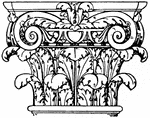
Roman Composite Capital
The Roman composite capital is a fusion of the ionic and corinthian capitals.

Roman Corinthian Capital
The Roman Corinthian capital is found in the palaces of the emperors in Rome. It is a design of spiral…
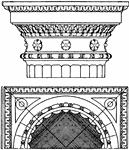
Roman-Doric Capital
The Roman-Doric capital is an antique design. It is found on the upper termination of a column.
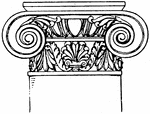
Roman-Ionic Capital
The Roman-ionic capital is a design of a scroll rolled on both sides with spiral curves. It has an added…
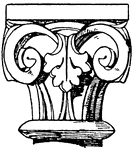
Romanesque Capital
This Romanesque capital is a simple design that is reminiscent of the Antique style.
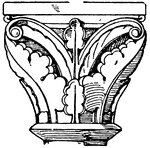
Romanesque Capital
This Romanesque capital is found in cloisters of a church. It is a simpler design that is reminiscent…
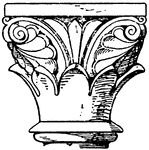
Romanesque Capital
This Romanesque capital is found in cloisters of a church. It is a simpler design that is reminiscent…
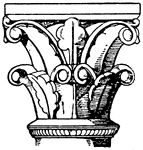
Romanesque Capital
This Romanesque capital is found in cloisters of a church. It is a simpler design that is reminiscent…
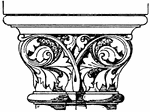
Romanesque Coupled Capital
The Romanesque Coupled Capital looks like two capitals that are conjoined together.
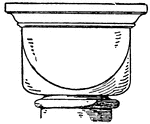
Romanesque Cushion Capital
The Romanesque Cushion Capital is found in St. Gereon's church in Cologne, Germany. It is a design of…

Romanesque Cushion Capital
The Romanesque cushion capital is a design found in a monastery in Lippoldsberg, Germany. The design…
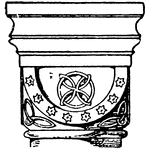
Romanesque Cushion Capital
This Romanesque Cushion Capital is found in the Abbey church in Germany. It is a design of a half sphere…
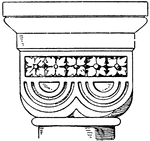
Romanesque Double-Cushion Capital
The Romanesque Double-Cushion Capital is an 11th century design found in the Rosheim church in France.…
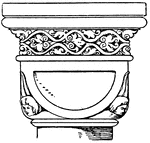
Romanesque Double-Cushion Capital
The Romanesque Double-Cushion Capital is a design of a half sphere that is cut by planes below and on…

Volute of the Corinthian Capital
"A kind of spiral scroll used in Ionic, Corinthian, and Composite capitals, of which it is a principal…

Volute of the Ionic Capital
"A kind of spiral scroll used in Ionic, Corinthian, and Composite capitals, of which it is a principal…
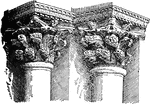
Byzantine Capitals
An illustration of a Byzantine capital from the central portal of St. Mark's Venice. In several traditions…
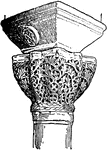
Byzantine Capitals
An illustration of a Byzantine capital from the the Church of St. Vitale, Ravenna. In several traditions…
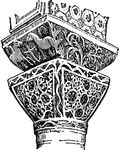
Byzantine Capitals
An illustration of a Byzantine capital from the the Church of St. Vitale, Ravenna. In several traditions…

Cushion Capitals
An illustration of a cushion capital. In several traditions of architecture including Classical architecture,…

Gothic Capitals
An illustration of a Gothic capitals from Wells Cathedral. In several traditions of architecture including…
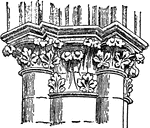
Gothic Capitals
An illustration of a Gothic capitals from from Amiens Cathedral. In several traditions of architecture…
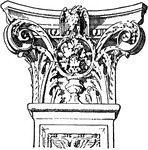
Italian Renaissance Capitals
An illustration of Italian Renaissance capital from St. Maria dei Miracoli, Venice. In several traditions…
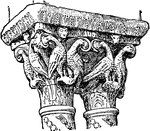
Romanesque Capitals
An illustration of a Romanesque capitals from the cloister of Monreale near Palermo, Sicily. In several…

Ionic Capital
The ionic capital is a design of a scroll rolled on both sides with spiral curves. It is found in Bassae,…

Ionic Capital
The ionic capital is a design of a scroll rolled on both sides with spiral curves. It was found in Pompeii.
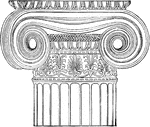
Ionic Angle Column from the Temple of Minerva Polias at Athens, Front
The good effect of the Ionic capital is really only produced by the front-view. It seems calculated…
